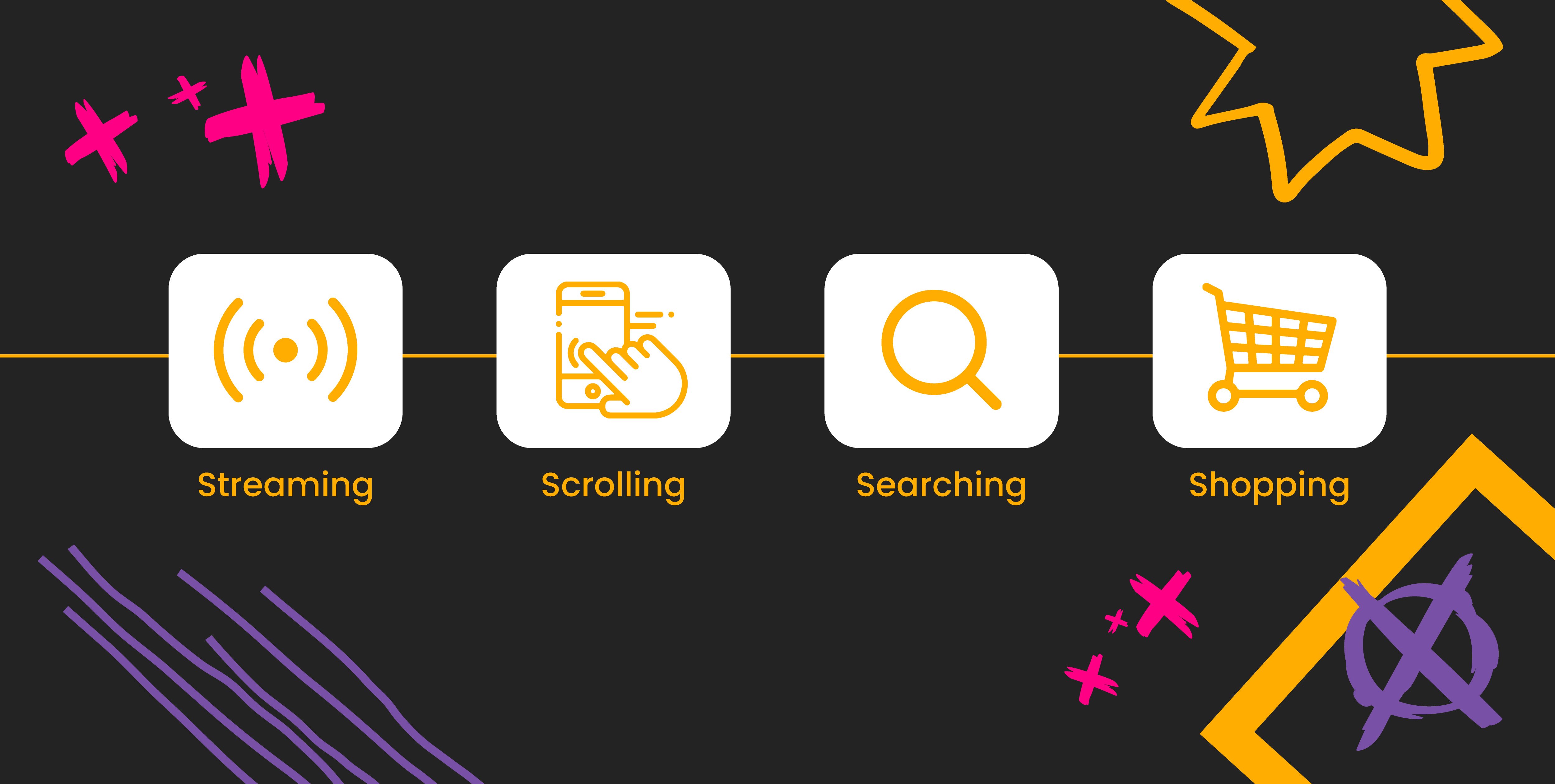Understanding the intricacies of consumer behaviour is paramount for marketers aiming to effectively engage their audiences. Recent research by the Boston Consulting Group (BCG) and Google has identified four pivotal behaviors:
- Streaming,
- Scrolling,
- Searching, and
- Shopping
Collectively termed as the "4S behaviours," they have fundamentally reshaped the consumer decision-making process.
The Traditional Marketing Funnel
The traditional marketing funnel has long served as a foundational model for understanding the customer journey, delineating a linear progression from awareness to purchase, and typically structured in the stages: Awareness, Interest, Desire, and Action (AIDA).png?width=1600&height=750&name=TwG-US-2615_V2%20(1).png)
This model presupposes a straightforward path where consumers are systematically guided toward a buying decision. However, the digital revolution and evolving consumer behaviours have rendered this linear approach increasingly inadequate.
- Non-Linear Consumer Journeys: Modern consumers engage with brands through multiple touchpoints across various channels, often revisiting stages or skipping them entirely.
- Emphasis on Acquisition Over Retention: The conventional funnel focuses predominantly on customer acquisition, often neglecting post-purchase stages crucial for fostering loyalty and advocacy.
- Rise of Digital and Social Media: The advent of digital platforms and social media has transformed how consumers interact with brands. This shift empowers consumers to enter the buying process at various stages, challenging the funnel's sequential flow.
Breaking Down the ‘4S Behaviours’ Marketeers
1. Streaming: The Era of Continuous Content Consumption
Streaming has transcended traditional media consumption, evolving into a continuous, personalised experience across platforms such as YouTube, connected TV, and podcasts. Unlike conventional one-way advertising, streaming offers interactive opportunities, allowing consumers to seamlessly transition from discovery to decision-making. To capitalise on this behaviour, marketers should focus on content sequencing, AI-driven personalisation, and interactive storytelling, transforming passive viewers into active participants.
2. Scrolling: Modern-Day Discovery Mechanism
Scrolling has become analogous to contemporary window shopping, with consumers continuously exploring content on social media feeds, news aggregators, and other digital platforms. This behavior facilitates serendipitous discovery, enabling brands to capture attention through engaging visuals and compelling narratives. Implementing strategies such as shoppable posts, influencer collaborations, and timely content can effectively convert casual scrollers into potential customers.
3. Searching: Intent-Driven Information Exploration
The act of searching remains a cornerstone in the consumer journey, with individuals actively seeking specific information to inform their decisions. This intent-driven behaviour underscores the importance of a robust search engine presence. Optimising for relevant keywords, providing comprehensive and authoritative content, and ensuring mobile-friendly experiences are critical tactics to meet consumers at their point of inquiry.
4. Shopping: Seamless Transition from Browsing to Purchasing
Shopping behavior has been revolutionised by digital advancements, with consumers expecting frictionless transitions from product discovery to purchase. Integrating features such as one-click purchasing, diverse payment options, and personalised recommendations can enhance the shopping experience, fostering higher conversion rates and customer satisfaction.
Integrating the 4S Behaviours into Marketing Strategies
The 4S behaviours aren’t isolated phases; they intertwine across the modern consumer journey. As digital behavior becomes more fragmented and unpredictable, brands must align their marketing strategies with how people actually discover, evaluate, and purchase products today. Understanding these behaviours allows marketers to anticipate consumer needs, serve them relevant content in real-time, and create seamless experiences across touchpoints.
1. Streaming: Treat Video Content as a Performance Channel, Not Just a Branding One: Today’s consumers are spending an average of 19 hours per week watching online videos, and over 90% of people say they discover new brands or products via YouTube. Streaming behaviour—especially on platforms like YouTube, TikTok, and connected TV has evolved into a discovery engine that spans entertainment, education, and decision-making.Brands should move beyond one-off ads and think in terms of sequenced storytelling.
2. Scrolling: Capture Interest Through High-Impact Creative and Social Proof: Scrolling is no longer passive. Platforms like Instagram, TikTok, and Pinterest have become central to product discovery, especially for Gen Z and Millennials. According to a study by Meta, 83% of Instagram users discover new products or services on the platform.
Invest in thumb-stopping content that delivers your message within the first few seconds. Use native formats (e.g., Stories, Reels, carousels) and ensure your content looks and feels organic to the platform. User-generated content, influencer partnerships, and dynamic creative testing can boost authenticity and drive engagement. For e-commerce, enable features like Instagram Shopping or Pinterest Product Pins to offer instant product exploration from feed to cart.
3. Searching: Optimise for Intent with High-Quality, Authoritative Content: Search remains one of the most powerful indicators of consumer intent. Google processes over 8.5 billion searches per day. Whether consumers are looking for product reviews, price comparisons, or “near me” options, they rely on search engines to narrow down choices during the evaluation phase.
SEO is no longer just about keywords—it’s about intent. Brands should create content clusters that answer key questions users have across their journey, from awareness (“best laptops for students”) to decision-making (“MacBook Air vs Dell XPS”). Structured data, fast-loading mobile pages, and FAQs optimised for voice search enhance visibility. Paid search strategies should focus on granular targeting, responsive search ads, and keyword grouping that reflects real-time user interests.
4. Shopping: Remove Friction and Personalize the Path to Purchase: Digital shopping has been reshaped by consumer expectations for convenience, speed, and personalisation. A recent report by Salesforce found that 80% of customers say the experience a company provides is as important as its products or services.
